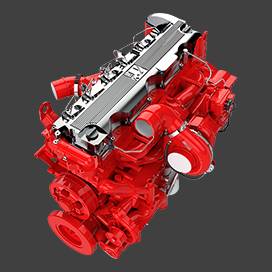Dec . 11, 2024 09:26 Back to list
Troubleshooting Strange Noises from Rear Brake Drum System
Understanding Rear Brake Drum Noise Causes and Solutions
When it comes to vehicle maintenance, one area that often goes unnoticed until it becomes a bigger issue is the braking system. Specifically, the rear brake drums can be a source of noise that raises concerns for many drivers. Understanding what causes this noise and how to address it is essential for keeping your vehicle in good condition and ensuring your safety on the road.
What Are Brake Drums?
Brake drums are crucial components of a drum brake system, typically found on the rear wheels of many vehicles. When you press the brake pedal, the brake shoes expand against the inner surface of the drum, creating friction that slows down the vehicle. While these components are designed to function effectively, they are not immune to wear and tear, which can lead to various issues, including noise.
Common Causes of Noise
1. Worn Brake Shoes One of the most common causes of noise from brake drums is worn brake shoes. Over time, the friction material on the shoes wears down, resulting in metal-on-metal contact that produces a grinding or squeaking sound. If you hear such noises, it’s a good indicator that your brake shoes need to be inspected and possibly replaced.
2. Dust and Debris Brake dust, dirt, and small stones can accumulate inside the brake drum, causing unwanted noise when the brakes are applied. This type of noise is usually a more benign issue, but it’s important to clean the drum area regularly to prevent any potential damage.
3. Corrosion Brake drums are exposed to moisture and environmental elements, leading to corrosion. Rust can develop on the brake drum's surface, resulting in a rough texture that can create a grinding noise when the brake shoes make contact. Regular inspection and maintenance are necessary to prevent this from becoming a significant issue.
4. Improper Installation If the brake components have been recently replaced or serviced, improper installation can lead to misalignment. This misalignment can cause uneven wear on the brake shoes and drums, leading to noise during braking. If noise occurs shortly after a brake service, it’s crucial to have the job checked by a qualified mechanic.
rear brake drum noise

5. Brake Drum Warping Heat generated during braking can cause the brake drums to warp, leading to an uneven contact surface with the brake shoes. This warping can produce a rhythmic scraping or thumping noise when brakes are applied. Warped drums typically need to be resurfaced or replaced.
Addressing the Issue
To effectively address rear brake drum noise, the following steps can be taken
1. Regular Inspections Regularly checking the condition of your brake components can help catch issues before they escalate. This includes examining the brake shoes, drums, and associated hardware for wear, corrosion, or debris.
2. Professional Maintenance If noise is detected, it’s advisable to have a professional mechanic evaluate your brake system. They can determine the exact cause of the noise and recommend whether the brake shoes need replacement, the drums need resurfacing, or if other repairs are required.
3. Cleaning Keeping brake components clean is vital for optimal performance. A thorough cleaning can eliminate dust and debris that contribute to noise.
4. Replacement of Worn Components If worn shoes or damaged drums are observed, replacing them promptly will not only eliminate the noise but also ensure your brake system is functioning safely and efficiently.
Conclusion
Rear brake drum noise can stem from various issues, from wear and tear to debris accumulation. Understanding the potential causes and taking proactive measures can help maintain your vehicle's braking system and improve overall safety. If you encounter any unusual noises from your brakes, don’t hesitate to seek professional help to ensure your vehicle remains reliable and safe to drive. Regular maintenance and attentive care can go a long way in preventing noise and ensuring smooth braking performance.
-
Brake Drum Man - High-Quality Drum Brake Drums & Brake Shoes for Reliable Performance
NewsJun.24,2025
-
High-Quality Brake Drum Kamaz – Durable Drum Brake Drum & Brake Shoe Replacement
NewsJun.10,2025
-
High-Quality Brake Drum Liza for Drum Brake Systems - Superior Durability and Performance
NewsJun.10,2025
-
High-Quality Brake Drum Kamaz – Durable Drum Brake Drum & Brake Shoe Solutions
NewsJun.10,2025
-
Durable Kamaz Brake Drums High-Performance Truck Parts
NewsJun.09,2025
-
Premium Brake Drum Maz Kit with Shoes Enhanced Braking
NewsJun.09,2025
